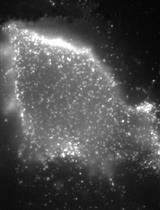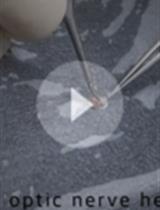- Submit a Protocol
- Receive Our Alerts
- EN
- EN - English
- CN - 中文
- Protocols
- Articles and Issues
- For Authors
- About
- Become a Reviewer
- EN - English
- CN - 中文
- Home
- Protocols
- Articles and Issues
- For Authors
- About
- Become a Reviewer
ELISpots Assay to Measure the Number of Murine Plasma Cells Producing Anti-dsDNA Antibodies
Published: Vol 1, Iss 24, Dec 20, 2011 DOI: 10.21769/BioProtoc.34 Views: 12788

Protocol Collections
Comprehensive collections of detailed, peer-reviewed protocols focusing on specific topics
Related protocols

Measuring the Endocytic Recycling of Amyloid Precursor Protein (APP) in Neuro2a Cells
Florent Ubelmann [...] Claudia Guimas Almeida
Dec 5, 2017 7232 Views
Determining Ribosome Translational Status by Ribo-ELISA
Amandine Bastide [...] Alexandre David
Jan 5, 2018 5910 Views

Non-separate Mouse Sclerochoroid/RPE/Retina Staining and Whole Mount for the Integral Observation of Subretinal Layer
Sung-Jin Lee and Soo-Young Kim
Jan 5, 2021 2425 Views
Abstract
Circulating anti-dsDNA antibody is a hallmark of SLE both in human patients and in many SLE mouse models. This protocol describes how to measure the frequency of plasma cells producing these antibodies in the spleen of lupus-prone mice. This protocol was developed or modified in Dr. Anne Davidson’s lab at Feinstein Institute for Medical Research.
Keywords: LupusBackground
Materials and Reagents
- Salmon sperm DNA (Life Technologies, Invitrogen™, catalog number: AM9680 )
- Dulbecco’s modification eagle medium (DMEM) (Life Technologies, Invitrogen™)
- Ammonium chloride (0.17 M, filtered, autoclaved) (pH 7.4)
- 10% DMEM: 10% FBS in DMEM
- Biotin conjugated anti-IgM or anti-IgG (Southern Biotech)
- Streptavidin alkaline phosphatase (Southern Biotech)
- 5-Bromo-4-chloro-3-indolyl phosphate (Sigma-Aldrich)
- 10x PBS-Tween 20 (see Recipes)
- Blocking solution (see Recipes)
- AMP buffer (see Recipes)
Equipment
- 45-μm syringe top filter (USA Scientific)
- Cell-culture incubator
- Clear 96-well Microtest polystyrene assay plate (BD Biosciences)
- Conical tubes (Corning)
- Dissecting microscope or an ELISpot reader
Procedure
- Make double stranded salmon sperm DNA by passage though a 45 μm filter.
- Add 100 μl/well of 100 μg/ml salmon sperm DNA to a 96-well Microtest assay plate.
- Wrap the plate with plastic wrap and incubate at 4 °C for overnight.
- Discard the coating antibody solution and wash the plate with 1x PBS-Tween 6 times.
- Dry the plate and add 100 μl of blocking solution per well to the plate.
- Incubate the plate at room temperature (RT) for 1.5 h.
- Discard the blocking solution and wash the plate with 1x PBS-Tween 5 times.
- Dry the plate and keep it at 4 °C for later use.
- Harvest the spleen and create single cell suspension by gently smashing spleen pieces with the frosted surface of a pair of microscope slides in 5 ml of DMEM.
- Transfer the cells into 50 ml conical tubes and spin down the cells at 300 RCF for 5 min at 4 °C.
- Discard the supernatant with aspiration without disturbing the pellet.
- Resuspend the cells with 5 ml of 0.17 M ammonium chloride and keep the cells on ice for 5 min.
- Add 15 ml DMEM to the cells and spin at 300 RCF for 5 min at 4 °C.
- Discard the supernatant and resuspend the cells with 20 ml of DMEM and count the cells.
- Resuspend 2 x 107 cells in 2 ml of 10% DMEM and make three fold serial dilution (a total of 8 dilutions) with 10% DMEM.
- Add 50 μl/well of the serial dilutions on the DNA coated plate and centrifuge at 300 RCF for 5 min at 4 °C.
- Incubate the cells at 30 °C for 2 h in a cell-culture incubator with 6% CO2.
- Add 50 μl/well of biotin-conjugated anti-IgM or anti-IgG (1:350 in 10% DMEM) to the cells.
- Centrifuge the cells at 300 RCF for 5 min at 4 °C and incubate the cells overnight a cell-culture incubator with 6% CO2.
- Discard the cells and wash the plates 10 times with 10x PBS-Tween 20.
- Dry the plates and add 50 μl of streptavidin alkaline phosphatase (1:1,000 in 1% BSA/PBS) to the plate.
- Incubate the plate at RT for 1 h and wash the plate 10 times with 10x PBS-Tween 20.
- Dry the plate and add 50 μl/well of 1 mg/ml BCIP in AMP buffer to develop the plate.
- When the spots are clearly visible under a dissecting microscope, stop the development by discarding the BCIP solution and rinsing the plate with tap water thoroughly.
- Spots can be counted using a dissecting microscope or using an ELISpot reader.
Recipes
- 10x PBS-Tween 20 [0.1 M PBS, 0.5% Tween 20 (pH 7.4)]
Mix to dissolve and adjust pH to 7.4 and then add 5 ml of Tween 20, store this solution at RT. Dilute 1:10 with distilled water before use and adjust pH if necessary.Na2HPO4 (anhydrous)
10.9 g
NaH2PO4 (anhydrous)
3.2 g
NaCl
90 g
Distilled water
1,000 ml
- Blocking solution
5% FBS and 3% BSA in PBS
- AMP buffer (pH 10.25)
0.75 mM MgCl
0.01% Triton-X
9.58% 2-amino-methyl-1propanol
Acknowledgments
This protocol was developed or modified in Dr. Anne Davidson’s lab at Feinstein Institute for Medical Research, NY, USA. This work was supported by grants from the NY SLE Foundation (RB), Rheuminations, NIH AI082037 and AR 049938-01, NIH (PO1 AI51392 and the Flow Cytometry and Protein Expression and Tetramer Cores of PO1 AI51392).
References
- Mihara, M., Tan, I., Chuzhin, Y., Reddy, B., Budhai, L., Holzer, A., Gu, Y. and Davidson, A. (2000). CTLA4Ig inhibits T cell-dependent B-cell maturation in murine systemic lupus erythematosus. J Clin Invest 106(1): 91-101.
Article Information
Copyright
© 2011 The Authors; exclusive licensee Bio-protocol LLC.
How to cite
Liu, Z. (2011). ELISpots Assay to Measure the Number of Murine Plasma Cells Producing Anti-dsDNA Antibodies. Bio-protocol 1(24): e34. DOI: 10.21769/BioProtoc.34.
Category
Immunology > Antibody analysis > Antibody-antigen interaction
Biochemistry > Protein > Immunodetection > Immunostaining
Biochemistry > Protein > Immunodetection > ELISA
Do you have any questions about this protocol?
Post your question to gather feedback from the community. We will also invite the authors of this article to respond.
Tips for asking effective questions
+ Description
Write a detailed description. Include all information that will help others answer your question including experimental processes, conditions, and relevant images.
Share
Bluesky
X
Copy link






